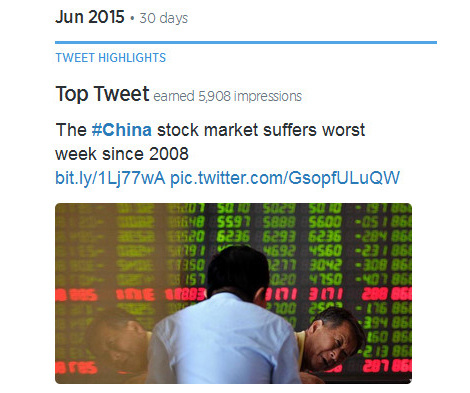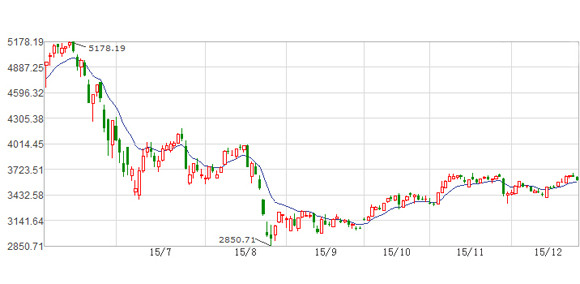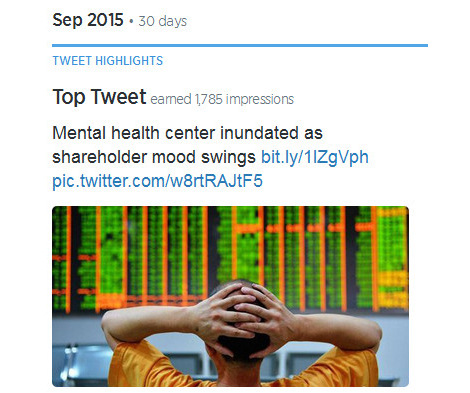Stock market turmoil
On June 19, the Shanghai Composite Index sank 6.4 percent to 4478.36 points, extending its weekly retreat to 13.3 percent. At that point, it was the worst week the benchmark Shanghai index had suffered since the global financial crisis.
The unexpected slump made Chinese stocks again the focus of global attention, and discussions on this topic became top tweet of the month.

Prior to that week, China's two main stock exchanges had seen equities values growing at a phenomenal rate, as the Shanghai gauge had jumped more than 59 percent since the start of this year, while the Shenzhen Composite Index had risen by more than 65 percent.
The unexpected "worst week" caused shifts in sentiment. In the following 10 weeks, the benchmark Shanghai index crashed to as low as 2850.71 points.

With fears that stocks might continue to slide, between July and August the Chinese government rolled out a series of rescue measures.
For instance, the regulators suspended IPOs, halted massive sell-offs and barred major investors from selling their stakes, while the central bank injected cash into money markets and came up with further monetary easing measures.
The government's strenuous efforts were effective in halting a stock market rout, as an encouraging rebound appeared and the stock market continued to go higher.
By December 22, 2015, the Shanghai Composite Index has climbed back to 3651.77 points.



















































